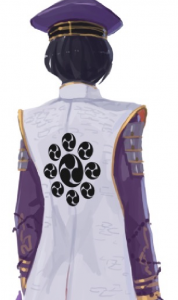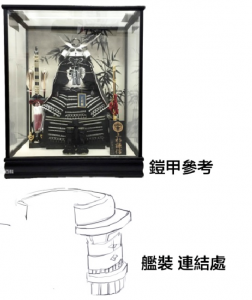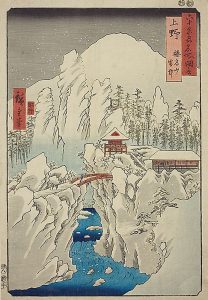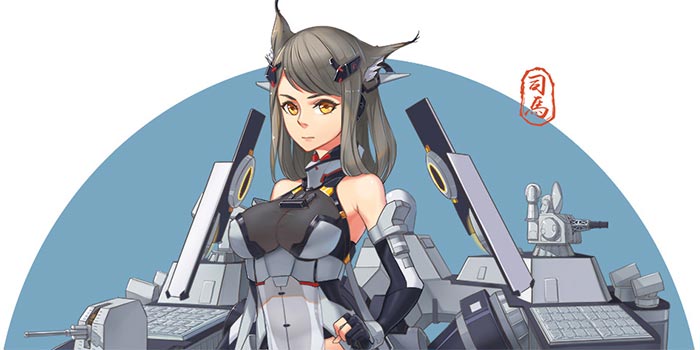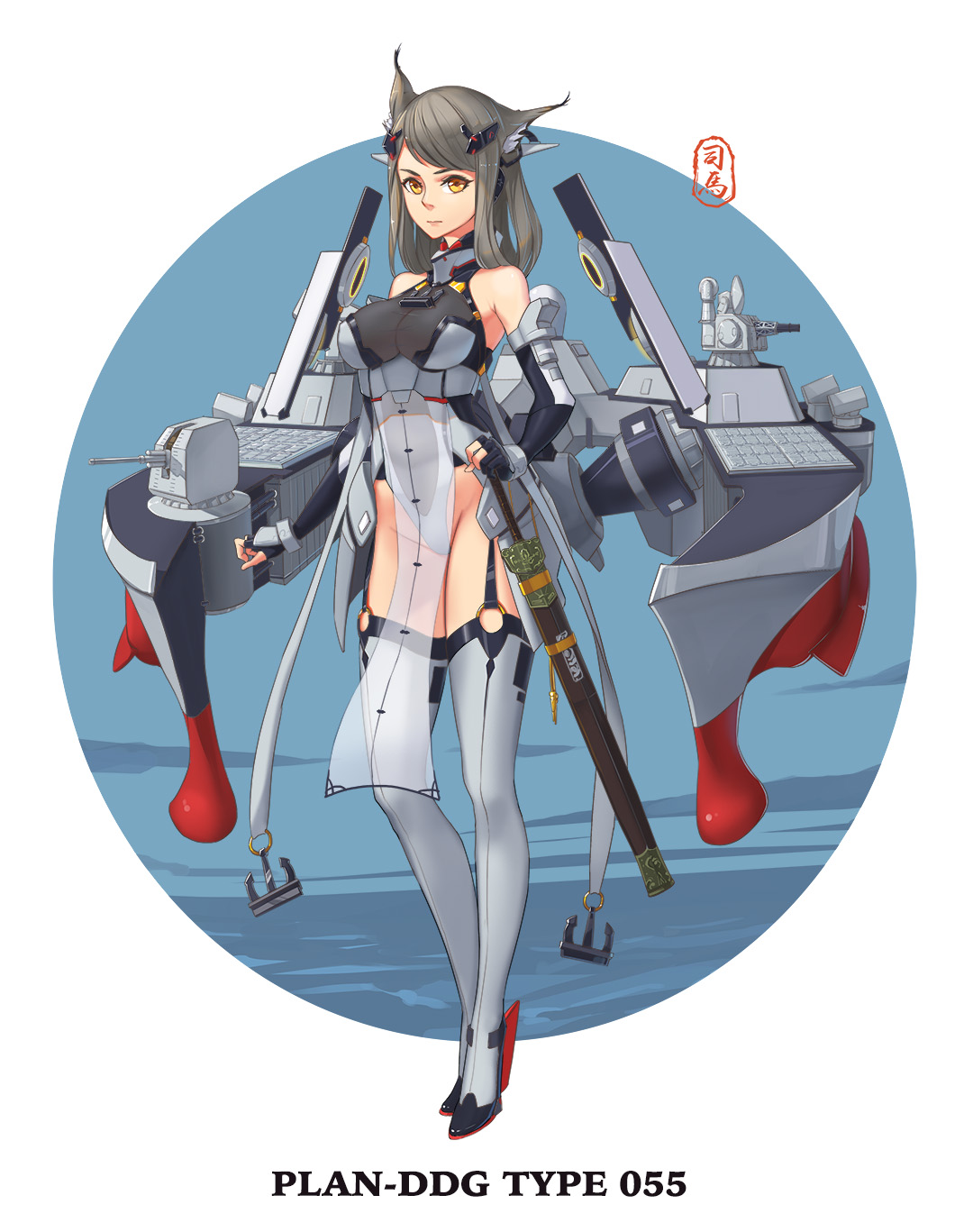Or what should be titled “Alternative history in Pacific”
“Why is Pacific set in sorta-90s and not the modern day like most of the other works?”

First of all, the “start” of the Pacific plot (think of it as 40k moving the plot forward) hasn’t occurred yet because the Abyssals haven’t invaded. The vast, vast, vast majority of non-historical works, ranging from the shipgirl introductions in the Pacific books or Silent Service, is set in this pre-Abyssal invasion period. So approximately 1987-1990.
Everything else, such as AR’s histories or my site updates, ranges over a period of about 40 years.
To me, I think in order to create a believable world (after all, my purpose is to immerse yourself in our world design), the overall technological capabilities should match what you’re trying to communicate with the story.
Pacific’s tale isn’t about fall from paradise. It’s not about working towards an idealized society. It’s not really slice-of-life or relationship drama or battle-tech-epic. It’s about fighting off an extra-dimensional, all-consuming threat. Simply put, it’s about humanity and what humans do. Pedantic, I know, but that’s the point. Right off the bat this rules out any generalizability of post-human or future-fiction level of technology, civilian or otherwise. If humanity can still be starved into submission with matter replicators or gauss weaponry then humanity is either very incompetent or my Abyssals are. Doesn’t really work that well.
Considering that the focus is on humanity at large, there is a close theme of international cooperation. Thus, it necessitates that I set the world in a time period where it is easy to acquire information. This basically means that anything earlier than say, the 1850s, would be difficult. Not to mention anything before that simply wouldn’t fit – if the Abyssals nom modern armies like a snack, Napoleonic navies wouldn’t stand a chance, period. It isn’t realistic either.
Lastly, Pacific is America-centric. This basically narrows down the time period to sometimes within the last seventy years. Why choose to start the tale in a “90s” type setting as opposed to immediately plunging the world into the Abyssal war in 1950? Why wait for 40 years before kickstarting what should be Pacific’s main event?
Well. It’s what I want to do. You ever play with little plastic or metal soldiers? The set-up, the build-up, the development. The, uh, laying of your dudes on the carpet (age 5) or the selection of your paint scheme (age 19) or the readings of many history books (age 23) are all a part of it. I don’t want to just “pop” out a world setting. I want my reader to see how the world got to that point. For instance I’ve told you that communism is still alive and well in the USSR. How? How is this even possible? I’ve told you that the US in Pacific is also considerably more unified, peaceful, and prosperous than its real-life counterpart. Again, how?
If we simply follow the trajectory of history in real-life, these things cannot be. They would be wishful thinking. You need to know how they turned out differently to see (or start to see) how our thought processes arrived at this kind of a conclusion. For instance, consider for instance one of the earlier Lens of Histories.
Take this incident. Note the key locations. Rickover is clearly pissed at something that’s happening in the Kuril islands. If you understand the history (as well as the real life claims by the Russians and the Japanese) you’ll quickly understand why the KOG is ticked off.
In real life, that area has both strategic and economic value. Fishing and natural resources are very important. Now, consider that in Pacific’s world, there are now shipgirls. Wouldn’t that be a good place to develop a base? What if there are other strategic materials underneath there that may be useful to the countries that want that land?
Ah, so now you see it. First of all, Rickover’s calling about something – what appears to be supplies – given to the Soviet Union. Considering that the USSR has literally been made Great Again (TM) under Draa and K9’s development, the first question should be: what? Reading that appears to be defensive armaments or weapons. Hm. What could the Soviets buy from the US?
Actually, a better question would be: how in the WORLD is the US selling weapons to their #1 “cold war” rival? Noticing this point you immediate can reach two conclusions.
- Rickover is doing this under the table. This is plausible, as STEC has a gigantic amount of covert operational capabilities. STEC literally crafts its own pseudo-sci-fi tier tech. Just think about the tech requirements for something like MERLIN to function. That’s beyond even the military of Pacific’s timeline.
- Relations with US and the USSR are actually warm enough that weapons are sold as-is.
- Relations with the US and the USSR are enough to facilitate trade. STEC just made up an excuse (like, calling them tractors or cranes or something) and nobody checked the packages.
Which one of these is more plausible? Well. Consider some other pieces of information you’re given. The answer here is all of them. I’ve written on the KOG before (and there are well-written autobiographies of the man out there if you’re curious), but the telltale signs of 2 and 3 being plausible are all over the place. There’s no grain embargo in the Pacific-verse. AR2 talks about exchange of military advisors and attaches – something that would never happen during the Cold War. On top of that the USSR was too focused internally to be spreading communism worldwide, and that they are at least aware of the Abyssal threat very early on and seem to be nominally cooperative.
On that last point, too, is something worth thinking about. There is a sort of masquerade that goes on. Conspiracy theorists would have a field day in the Pacific universe, because at the moment it is quite literally the elites of the world gathered together to create a secretive, high-tech special force dedicated to fighting basically space fish-monsters and occasionally “monster girls.” The degree of operational depth that STEC possess is going to be immense given that there’s been virtually no leakage of the Abyssals, period.
(A reminder, too, that if you think about it, with STEC’s observational capabilities… Remember how I mentioned earlier that STEC has entire divisions of staff combing news to see if the secret is out in OCEAN –
Aw cripes I forgot I haven’t posted the translated OCEAN yet.
Um, just know that STEC basically watches for “conspiracy theorists” involving the Abyssals because those folks are likely pretty damn capable to have started to figure things out to begin with. STEC may or not, I dunno, have like Marby launch a few floatplanes over NYC or something to keep the UFO or Lizard guys guessing.)
So, looking at this island dispute, you can immediately gather that:
- The world is currently unaware of the Abyssals as of 1982. This is probably because the collective powers that hold shipgirls all decide, in one way or another, that the costs far outweigh the benefits.
But, the build-up. Well, think about this. Let’s say we suddenly massed a lot of troops to South Korea. Surely everyone would be reporting on it, right? So…
- This build-up is either insignificant or otherwise went unobserved by the world’s collective militarizes at large.
- This build-up is par for the course in the area as a sort of routine provocation and it’s probably not worth the paper it’s printed on to report heavily on it.
- News is slow to travel.
STEC and the other shipgirl organizations. In effect and in no particular order, their strengths lies in the ability to innovate, the shipgirls themselves, basically free semi-sentient/intelligent labor/assistants (fairies), and a fully functional and complete intelligence system.
That’s why I joke that Pacific is high fantasy. You step on Avalon and you realize that half the stuff on it is really magic – or technology so capable that it’s indistinguishable from “magic,” anyways.
In the outside world? By necessity, there needs to be a contrast. Fairies aren’t house-elves. There aren’t a fairy for every electric appliance or vehicle out there for everyone to use. MS-DOS was invented in the real world in 1981, and in Pacific’s setting the internet basically got invented earlier – but its use in the real world is still currently very limited. Media companies latched onto the LED extremely rapidly (fairies had a hand in helping the development of the technology), and so you have a curious 60s-styled minimalist programming coupled with basically high definition TV and a sort of prototype Netflix-on-demand (let’s just say Pacific PBS is a major network and a significant producer of content) nationally available in the US.
However, TV has yet to supplant radio as the king of home entertainment, and in a strange fashion, because the American right never developed in the same way as it did here (well, less threat from the communists, after all!) contemporary arts and entertainment turned out differently as well. Hollywood’s music industry, for instance, never reached the same level of prominence it did in real life – its position of prominence are challenged by a large number of US cities such as Nashville or New Orleans. The golden age of Hip-hop basically showed up about twenty years earlier than its equivalent and faded away even faster. Classical and neoclassical music is probably actually dead in the US given how much it’s developed across Europe and ironically, the USSR. Country, popular in the Pacific timeline is on the rise. Rock and roll is experiencing a resurgence. Metal is probably more popular than what we’d expect in this society. So on and so forth.
Why might this be? Well, basically, an important factor to consider is that in Pacific’s America, thanks to some important changes in legislative precedent, large corporations simply never had a chance to rise. Today you can count media conglomerates on one hand, but in Pacific’s world, the “big names” are still pretty much small fries compared to where they’d be in real life. Competition forces innovation. Innovation results in change.
Take, for instance, music, again. Suppose a new alloy comes out that results in vastly improved acoustics for any musical instrument of your choice. What’s more, it basically drives the prices down such that every school can afford to buy itself an orchestra’s worth of musical instruments. Let’s say the US is a population of 200 million. Let’s say out of 100 people only one picks up an instrument and plays with it. Ten years later that’s still 2 million extra musicians in which one can add to the pool of talent.
What didn’t get developed as much? Well, ironically? Word processing software for some reason hasn’t hit the vogue yet. Most news outlets are still operating with the trusted typewriter. Print media is cumbersome, slow, but otherwise reliable since paper is a lot cheaper. Newspapers are still alive and well with little evidence of decline.
This went on for way longer than I had intended. Basically, what I’m trying to say is that US culture at large is much slower than it would be in real life. Technology has massively improved the lives of most Americans. Rural life isn’t usually so dreary that many wishes to head out to the ‘big cities,’ and city life isn’t usually so hectic that the average city-dweller is overwhelmed and overworked. A 20-20-60 rural/urban/suburban split is pretty approximately what Pacific’s America look like.
In contrast, due to improved infrastructure, public transportation is used a significantly greater deal. Information travels slower as I’ve mentioned, and most of the nation gets its news from radio or print media. Due to improved production certain cultural phenomena such as fast food took off and evolved past in the blink of an eye (well, when microwaves became ubiquitous and preservation/rapid freezing technology is excellent would you really want to pay 1$ for a burger when you can get a full course for 3$ at the local grocers), so the result of which is a sort of stagnant 90s level tech with oddities of 50-60s era mentality with flashes of inspiration from modern day. I use the term stagnant because the improvements tend to be incremental rather than dramatic in 90s Pacific timeline. The groundworks for potentially revolutionary concepts have been buried way earlier – like the internet, for instance. However, America’s currently preoccupied with more trivial things like making a better and bigger oven or a lighter type of canvas fabric rather than figuring out how to get everyone to spend all their time glued to a screen.
… In fact, I’d say that the most innovative thing to pop out of the Pacific timeline that’s managed to hit general use is probably the humble hand-held calculator in the 70s. Basically, to put things simply, this sparked off an actual tech war between US, UK, and Japanese companies. The result of which is that 90s Pacific has basically … super-calculators? Think like, basically modern-day cellphone type UI and highly advanced mathematical functions, but it can only really do math.
(Like, nobody’s honestly thought, hmm, I wonder if we can’t make this fancy stuff into some kind of hand-held entertainment device. Nope. Better just leave it to do work instead.)
If you read history you know what’s coming. Generally, something comes along that tends to shake up the order of things every couple of decades. Again, it’s almost as if Pacific’s got something waiting to happen…

